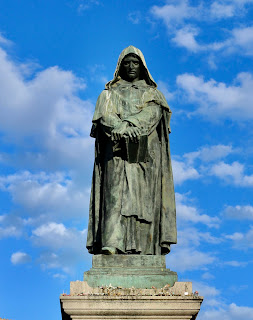Reflecting on Messengers as the Sun Sets
Yesterday's lecture about Islam provoked me to think deeply on the idea of messenger. We often hear the phrase, "don't shoot the messenger" and may even use it ourselves. Sometimes we don't want to hear the message. It may be inconvenient, controversial or contrary to our own understanding. It can challenge and provoke us and be unsettling. We do have a choice, and can act or not act according to the message.
I found myself reacting to the teaching from Islam that describes the Prophet as the last messenger, but after considering the course in its entirety - many faiths believe different things about their messengers. In Christianity we do not agree on many of the qualities that define prophets, martyrs and saints. As those participating in faith, we are all messengers. How we are remembered as those messengers is more about those that follow after our time.
Persons of Faith 'Remembered' in Bronze

Mariology in Islam Synopsis:
Palm Trees in Ancient Egyptian Religion
In ancient Egypt, the palm tree was considered a symbol of eternity due to its enduring trunk and fronds that reach for the heavens. The phoenix, an immortal bird, was often depicted perched on a palm tree in hieroglyphics – representing rebirth and renewal. Palm leaves were also used to adorn the tombs of the pharaohs, symbolizing everlasting life.
Biblical Significance of Palm Trees
The palm tree holds great importance in Christian and Jewish traditions as well. In Judaism, it’s mentioned multiple times in the Old Testament (Tanakh), such as in Jeremiah 17:5-8 where it’s said that “blessed is the one who trusts in the LORD…they will be like a tree planted by the water.” This verse highlights the palm’s association with life, strength, and stability.
In Christianity, palm trees are traditionally associated with the entry of Jesus into Jerusalem, known as Palm Sunday. Waving palm branches were used to greet Him in celebration, symbolizing triumph and victory over death.
The Symbolism of Palm Trees in Islam
In Islamic culture, palms are revered for their abundant fruits, shade-giving properties, and versatile uses. They’re often mentioned in the Quran as an example of God’s creation and mercy towards humans. Palm leaves are also used in decorating mosques during various festivals and celebrations.


Comments
Post a Comment